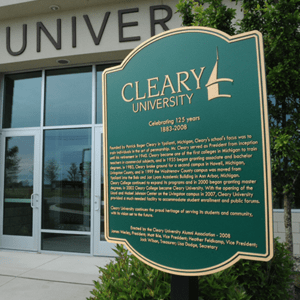As an institution committed to continuous improvement, Cleary University takes the concerns of its students seriously. Accordingly, the university follows a process through which complaints may be submitted for investigation and resolution.
A complaint is defined as: Communication from a student or other stakeholder alleging the university or its employees acted in one or more of the following ways:
Students should not view this complaint process as the first step in solving problems. It is almost always better for a student to work directly with the involved individual(s) and/or department(s) to resolve an issue. Use of this form should be reserved for problems that have not been satisfactorily resolved, or for problems that seem to re-occur. All complaints must be submitted using the below online form.
Anonymous submissions will be accepted. Those submitting anonymous complaints must understand that anonymity can impede the university’s ability to fully investigate the concern. Those submitting anonymous complaints will not receive specific feedback and status reports.
Individuals who provide their names will receive acknowledgment of a form’s submission within two business days. An investigation status report will be sent via e-mail to the student within five business days. Unless extenuating circumstances warrant, a final resolution report will be sent via e-mail to the student no later than ten business days from the date the complaint was received.
Report a complaint to the Ombudsman
Students need to first attempt to resolve their conflicts with faculty, staff, or other students directly or through the university ombudsman before a formal complaint is filed with an outside agency. Students do have the right to file a complaint with the university’s accreditor and state regulator.
By providing a telephone number and submitting this form you are consenting to be contacted by SMS text message. Message & data rates may apply. You can reply STOP to opt-out of further messaging.
Cleary graduates use their business arts education to become the employees, entrepreneurs, and leaders who transform the marketplace…and the world.
Follow Us
HOWELL
DETROIT
SUMMER HOURS: (May 12 to Aug. 4)
Mon-Thur | 7am to 5pm
Fri-Sun | Closed
